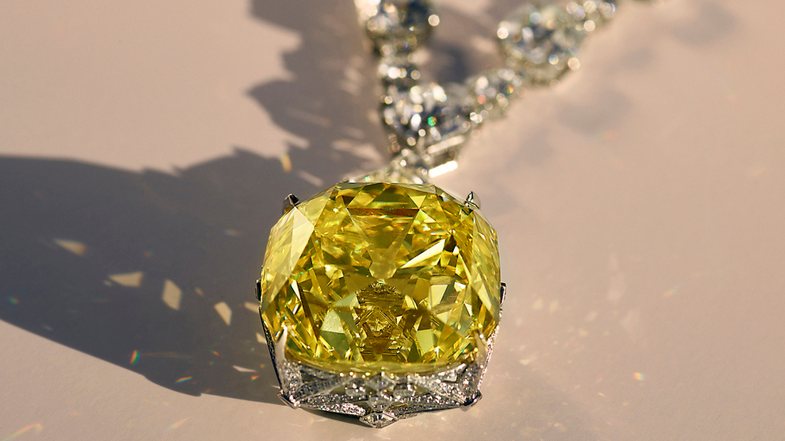
Beyoncé became the fourth person, after Mary Whitehouse, Audrey Hepburn and Lady Gaga, and the first woman of color to put Tiffany's Yellow Diamond in the "About Love" campaign. But on the other hand the singer has been criticized on social media for the fact that she appeared with the diamond necklace, which is one of the biggest yellow diamonds ever discovered.
Beyoncé is being criticized for having a "blood diamond" pendant. The UN describes "blood diamonds" as diamonds mined in areas "controlled by forces opposed to the legitimate government and sold to fund military action against that government", according to Britannica.

The diamond was discovered in a colonial mine in Kimberley, South Africa, in 1877 when the country and mines were under British colonial rule. With regard to diamonds, it has been reported that migrant workers, mostly people of color, were subjected to appalling working conditions and sometimes received no pay for their work. This term is used to highlight the negative consequences of the diamond trade in certain areas, or to label an individual diamond that has come from such an area.

“Beyoncé që bën një fushatë me një diamant gjaku nuk i përshtatet asaj, duke pasur parasysh punën e ndikuar nga Afrika në vitet e fundit,” shkruan dikush në Tëitter. “Nuk mund të magjepsem duke parë historinë e një diamanti gjaku thjesht sepse e ka vendosur Beyoncé,” lexohet në një tjetër koment.
Një burim pranë Beyoncé-s tha për The Sun se ajo është "e zhgënjyer dhe e zemëruar" që nuk ishte në dijeni të historisë së diamantit para se të merrte pjesë në fushatë.
"Ajo mendoi se çdo detaj ishte verifikuar, por tani e kupton se vetë diamanti ishte anashkaluar," tha burimi.
Washington Post columnist Karen Nicole Attiah believes the harsh reaction should be directed at Tiffany, not Beyoncé. According to her, many companies use women of color to appear "socially conscious" and avoid meaningful treatment of their disturbing history / practices.





